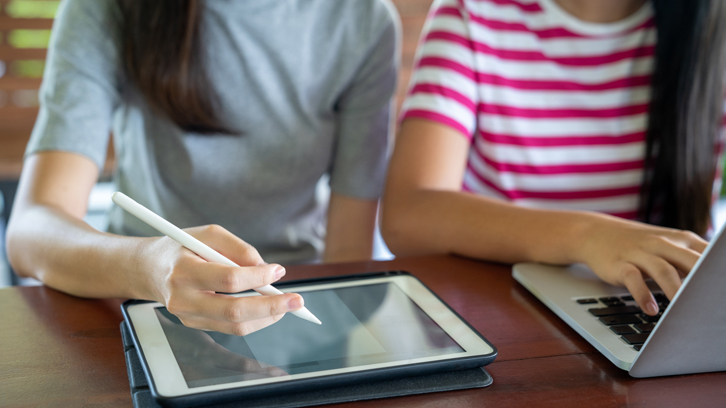Can students learn by creating teaching materials for other people?

A recently published meta-analysis by researchers from the Department of Basic, Developmental and Educational Psychology of the UAB indicates that the creation of didactic materials by students is beneficial for their learning at any educational stage. Even so, it is necessary to consider factors that condition these benefits.
At schools, high schools and universities, we increasingly ask students to generate products, including teaching materials, that is, resources that other people can use to learn.
There are many types of teaching materials that students can create. We can group them: audio/visual materials, questions, texts and educational games (Ribosa & Duran, 2022b). Audio/visual materials (videos, animations, photographs, posters, slides, comics or podcasts). Multiple-choice, true-false or short-answer questions, which may include feedback for the answerer. Texts, in the form of wikis, blogs, e-books or magazines. Or educational games, including board games, puzzles, trivia games, video games, PowerPoint games, simulations or virtual worlds.
These practices have an important social and community value because they contribute to the democratization of knowledge, in a society where we must be able to learn from each other —and thus teach each other (Duran & Topping, 2017). However, it is necessary to confirm whether students who create teaching materials learn the content better —that is, they learn by teaching.
This is what a recently published meta-analysis has aimed at (Ribosa & Duran, 2022a). The results are positive: creating teaching materials is beneficial for student learning. However, in practice, there are two important factors that determine the benefits of this kind of educational intervention.
The first factor is the format of the product. It seems that creating visual and audiovisual materials is more beneficial than creating textual materials. Even so, we know that there are ways to improve the effectiveness of interventions in which students create texts or questions, such as generating feedback or peer assessment.
The second factor has to do with the access to the original information source when the teaching material is being created. There are usually two stages in the process of creating a teaching material: content preparation —when you read the information source and take notes— and the material creation stage. In real contexts these stages are often mixed. It seems that having access to the information source when the teaching material is being created can limit the potential for learning, probably because it can make students tend to read the original text without retrieving or elaborating on the information. Other studies show that the features of these information sources influence learning outcomes as well (Lachner et al., 2022).
The effect of creating teaching materials does not vary between educational stages or knowledge areas, which encourages us to use this practice in any subject, at schools, high schools and universities.
Department of Basic, Developmental and Educational Psychology
Universitat Autònoma de Barcelona (UAB)
References
Ribosa, J., & Duran, D. (2022a). Do students learn what they teach when generating teaching materials for others? A meta-analysis through the lens of learning by teaching. Educational Research Review, 37, 100475. https://doi.org/10.1016/j.edurev.2022.100475
Duran, D. (2016). Aprensenyar: Evidències i implicacions educatives d'aprendre ensenyant. Horsori.
Lachner, A., Hoogerheide, V., van Gog, T., & Renkl, A. (2021). Learning-by-teaching without audience presence or interaction: When and why does it work? Educational Psychology Review, 34, 575–607. https://doi.org/10.1007/s10648-021-09643-4
Ribosa, J., & Duran, D. (2022b). Student-generated teaching materials: A scoping review mapping the research field. Education in the Knowledge Society, 23, 27443. https://doi.org/10.14201/eks.27443

